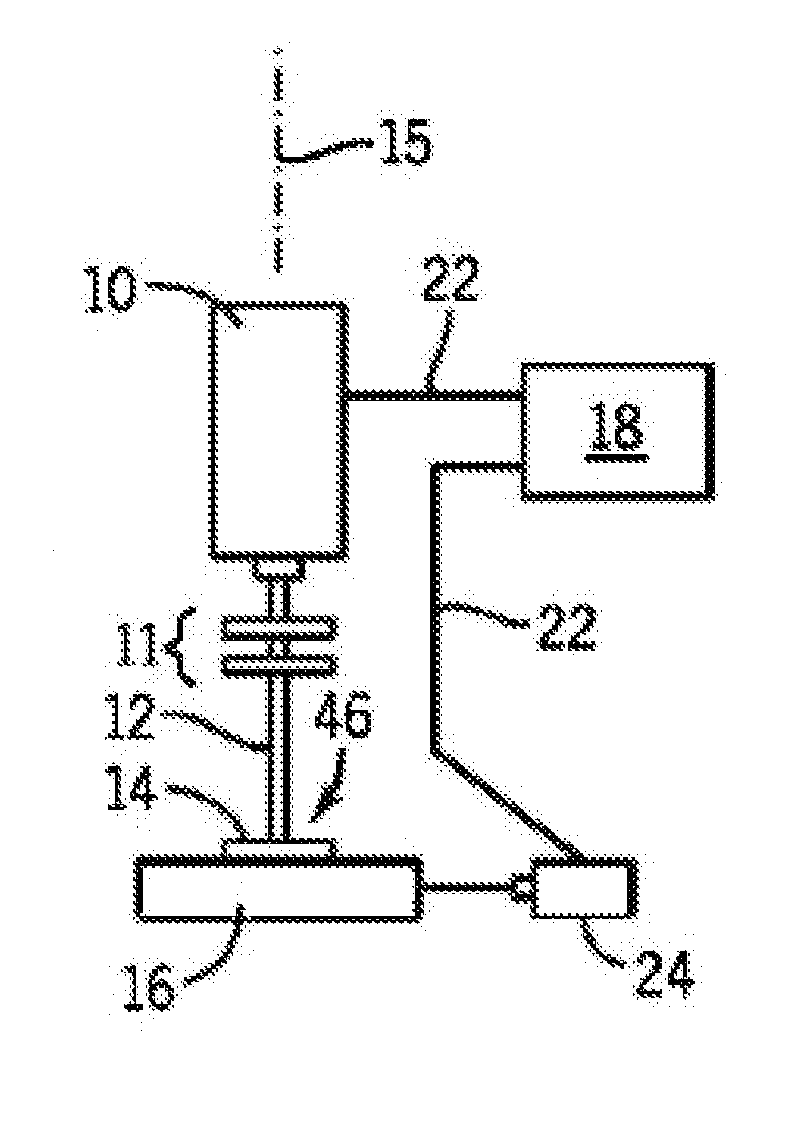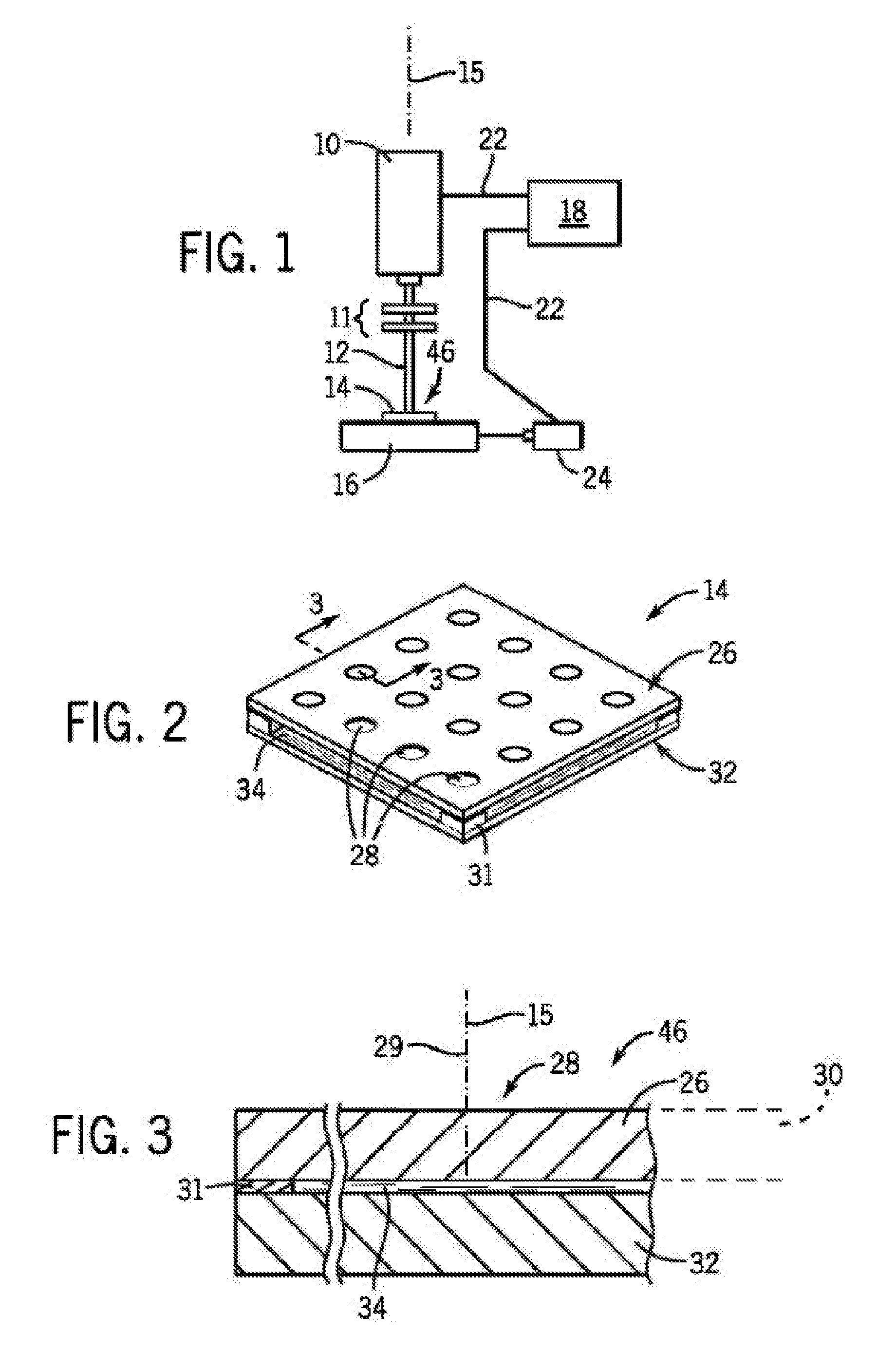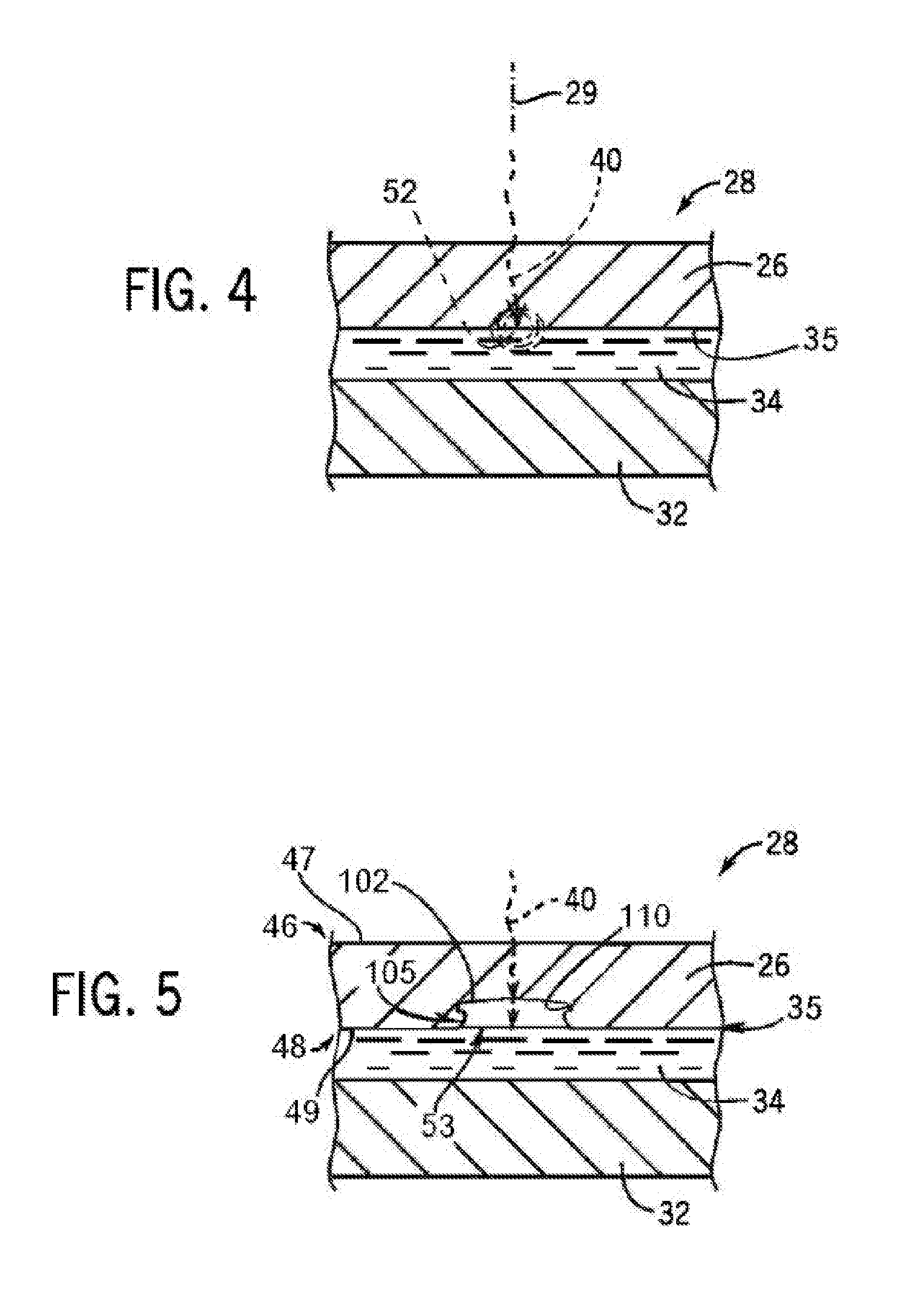Laser drilling technique for creating nanoscale holes
a laser drilling and nano-sized technology, applied in the field of electrophysics and “ patch clamping, can solve the problems of multiple steps, slow approach, and difficult and/or time-consuming rie techniques for fabricating (micromachining) the pores in a quartz substra
- Summary
- Abstract
- Description
- Claims
- Application Information
AI Technical Summary
Benefits of technology
Problems solved by technology
Method used
Image
Examples
Embodiment Construction
[0034]Referring now to FIG. 1, the present invention may use an ArF excimer laser 10 having collimating and focusing optics 11 to direct a narrow collimated beam 12 of light along an axis 15 toward a back surface of a sandwich-like, multi-layered assembly 14 that is held on a mechanical stage 16. The laser may, for example, have a wavelength range of about 155 nm to about 195 nm and is preferably operated to emit a beam 12 of light having a wavelength of about 193 nm. In other embodiments, laser 10 may be yet other types of lasers, such as CO2 lasers, and / or others, depending on, for example, a desired wavelength that is selected based on particular characteristics of components within the multi-layered assembly 14, in other words, how the multi-layered assembly 14 reacts to exposure to light having such wavelength(s), and / or other factors.
[0035]The laser 10 may include a variable attenuating mirror for controlling how much of the laser beam is to be transmitted, and a stencil metal...
PUM
| Property | Measurement | Unit |
|---|---|---|
| Fraction | aaaaa | aaaaa |
| Temperature | aaaaa | aaaaa |
| Pore size | aaaaa | aaaaa |
Abstract
Description
Claims
Application Information
 Login to View More
Login to View More - R&D
- Intellectual Property
- Life Sciences
- Materials
- Tech Scout
- Unparalleled Data Quality
- Higher Quality Content
- 60% Fewer Hallucinations
Browse by: Latest US Patents, China's latest patents, Technical Efficacy Thesaurus, Application Domain, Technology Topic, Popular Technical Reports.
© 2025 PatSnap. All rights reserved.Legal|Privacy policy|Modern Slavery Act Transparency Statement|Sitemap|About US| Contact US: help@patsnap.com



